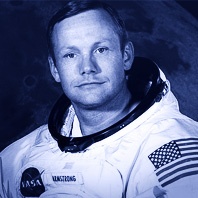Tag:
Space travel
Our Moon consists of rock, which was formed newly during its creation through a collision between the Earth and another planet, around 4.5 billion years ago. Lunar maria were created through meteoroid impacts, which can be seen as dark spots if observed from Earth.
A small amount of these rocks are on Earth. One part stems from a variety of moon missions (Apollo and Luna), the other from meteorites that struck the Earth as fragments. If you add up the registered mass of these rocks, you’ll end up with 738 kg (1,627 pounds). Which is actually »just a grain of rice« in comparison to the 81,000,000,000,000 kg that our Moon weighs.
Read more
A 3D Printer is a device with which you can print three-dimensional objects. This may initially sound strange, but will become obvious once you know that the objects can be built in layers. The printer applies the relevant materials instead of ink (i.e. plastic) and consequently forms the result.
Because these printers are now available for consumers at normal prices, in the future, we will purchase merely printing data instead of the product. So this trend actually moves away from mass-market productions and towards individualized items.
Read more
There are stories, they are so odd that they are hard to believe. Just a few days ago we came across this report, saying some multi-billionaires teamed up in order to buy the Moon. The motive for this unusual proposal is apparently an investment into future projects. It has been known for some time that the Moon could be significant for future utilization by people, and it therefore becomes a lucrative economic investment.
This is particularly about possible mineral resources, but also about the feasibility of creating moon colonies. Meanwhile, scientific studies have shown that the cultivation of plants – observed over extended periods of time – could create something like an atmosphere containing oxygen around the Moon. This is how a colonization on the Moon would be conceivable and it seems to be almost for certain that there should be enough volunteers, who would be willing to move away from Earth.
Read more
What does an astronaut has on his wrist? You are not going to believe it, but it is something completely earthly: a watch. Because time is, next to the coordinates which show his position in space, the most important information for his mission and his life. And although, astronauts are surrounded by all kind of instruments, it has already been thought of in the beginnings of space travel to equip the crew with wrist watches. Of course with special models only.
Read more
Times and times again, you read about the possibility to purchase lunar property. Is this to be taken seriously or more of a gimmick or a clever sales idea? If looked at more closely, some astonishing details are coming to light …
When the manned space flight started in the 60s and a trip to the Moon became more likely, nations tried to regulate the topic such as ownership in space, and created an »Outer Space Treaty« in 1967, which prohibits states to use space or its celestial bodies for self-serving or military purposes. This treaty was signed by 98 states, amongst them the superpowers, at the time USA and Soviet Union.
Read more
Neil Alden Armstrong (1930–2012) was a US American astronaut, who was the first man to set foot on the Moon as the commander of the Apollo 11 mission on 20th July 1969, 8:17:58 pm (UTC), and hence the first to step on a foreign celestial body. The mission was preceded by fierce competition about the “reign” of space, between the then superpowers USA and Soviet Union, so that the success of Apollo 11 turned out to not only have a historical meaning but also had a political relevance.
Read more
A hotel on the Moon – that sounds quite utopian if not absurd. Fact is, there are people thinking about colonising and inhabiting space or other celestial bodies, since man has been busy flying into space. And if we believe the statements of different companies that are planning hotels beyond the Earth, there has to be a great demand. This would actually be also necessary to make this project lucrative. Or is it merely the prestige and publicity, which are reaped by such an undertaking and hence would justify it?
Read more
When Neil Armstrong became the first human being that set foot on the moon within the scope of the Apollo 11 mission in 1969, he said the famous words »That’s one small step for (a) man … one … giant leap for mankind« and hence erected a monument for this historic move. Rarely in history, did the success of human research and development work, condense so impressively in just one moment.
Read more
We all grew up with stamps. Those small, delicate images which tell stories of countries and events and which can decorate an envelope quite wonderfully. Nowadays, letters are increasingly stamped with bar codes or rolling stamps. Still, the stamps are surviving and occasionally, the moon is to be seen on them. Mostly when a historic space travel event is being celebrated.
Read more
As is generally known, the Moon is not a disc but a sphere and one could ask the question if we actually get to see different sides of this Moon sphere? The answer is: no! At least this is true for the observer from Earth.
Indeed, we always see one half of the Moon. This is because the Moon is locked into the Earth rotation. This is called »synchronous rotation«. It means that we are never able to see the side of the Moon facing away from us. And until it was possible to photograph the reverse of the Moon with space probes, nobody knew what we would find or how it would look.
Read more










